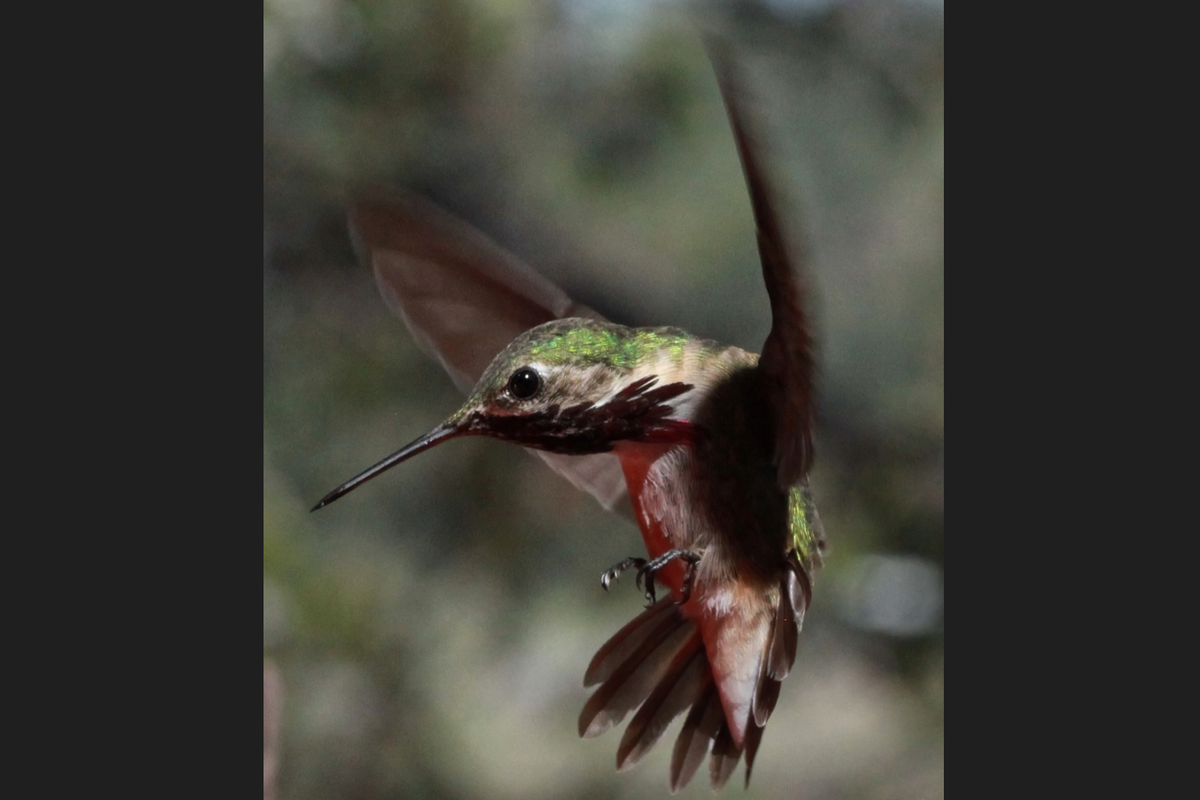Cool Critters: Born the size of a jellybean in the Northwest, the agile Calliope hummingbird takes off just weeks later for Mexico

A bird the size of a car key and weighing little more than a pingpong ball has returned to the Inland Northwest after migrating some 2,500 miles from its overwintering site in Mexico.
Flitting about at high speeds and shimmering like an airborne jewel, the tiny bird is eliciting big reactions from bird watchers and backyard loungers alike.
Welcome back, Calliope hummingbird. Since they started turning up at people’s nectar feeders in April, Facebook and Instagram have been abuzz with photographs and posts.
“Our first Calliope hummingbird has arrived!” a Mead resident exclaimed on the Spokane Birders Facebook page. “Hurray, they are back!” another fan gushed after spotting two Calliope hummers in Spokane.
Naturalist Carl Barrentine, a retired biology professor who lives in the outskirts of Spokane, was eating lunch with his wife, Shelby, on April 6 when suddenly her eyes widened and she pointed out their dining room window. A Calliope hummingbird hovered at their backyard feeder – its wings nearly invisible while beating more than 70 strokes a second. The couple saw a brilliant patch of magenta on the bird’s throat and knew it was a male.
“Even though the males typically migrate a bit sooner than the females, this one arrived particularly early,” Barrentine said. Knowing how far the tiny bird had traveled during its northward trek from Mexico, he and his wife felt a sense of “amazement,” he recalled.
After all, not only is the Calliope hummingbird the tiniest bird in the United States, but it also bears the distinction of being the “smallest avian migrant in the world,” according to the Cornell Lab of Ornithology.
The Calliope, with its bronze-green head and body, whitish underparts and coral streaks on the male’s throat, treks all the way up the Pacific Coast to the Pacific Northwest to breed. During daytime when it flies, its heartbeat vibrates at 1,200 times per minute, according to the National Audubon Society. To maintain its high level of energy, the bird must eat every 15 minutes or so, descending on flowers and hummingbird feeders or snacking on insects in midair, the organization says. At night when the bird rests, its heartbeat slows to about 200 beats a minute.
After hovering at the Barrentines’ feeder for a few minutes in early April, the bird darted off at lightning speed. The Calliope, like all hummingbird species, flies more like insects than birds, according to a 2014 study published in the Journal of the Royal Society Interface. A repertoire of aerodynamic skills enables them to pivot, fly sideways, backward and straight up like a helicopter. They even fly upside down.
Being that it’s early June, the Calliopes should be settled in for the season. As breeding season gets underway, the males become aggressive while defending their territory against perceived threats, flashing their colored feathers, soaring 100 feet high and then descending in a series of U-shaped dives.
Barrentine explains it this way: “Territorial males, emboldened by testosterone, are every bit as feisty and argumentative as politicians during the waning weeks before ballots are cast.”
Male calliopes, like other hummingbird species, aren’t monogamous and typically breed with more than one female each summer. After mating, the female builds her nest and feeds the young on her own. Her tiny cone-shaped nest – well camouflaged on a slender tree branch – is made of dandelion down, grass and other “soft plant materials,” according to the American Bird Conservancy, all held together by threads of spider silk taken from nearby webs.
When the two or three chicks hatch in early summer, they are the size of jellybeans, grayish-pink in color, blind and naked. Thanks to their mother’s around-the-clock care, they grow quickly. Within a month, they strike out from their cramped nest and begin foraging on their own.
Now is a good time to witness these tiny acrobats of the avian world. It’s not until mid-to-late July that adult males start leaving the region for Mexico, with females following a week or two later, according to the Audubon Field Guide. Meanwhile, the hummingbird fledglings, blind and the size of jellybeans just weeks earlier, will embark on their first migratory journey in early fall.
The smallest and lightest birds in North America’s skies will overwinter in Mexico and return to the Inland Northwest next spring to breed.
Perhaps one of them will be the first Calliope hummingbird of the 2025 season to turn up at Barrentine’s backyard feeder.
“We’ll be here, waiting for it,” he said.